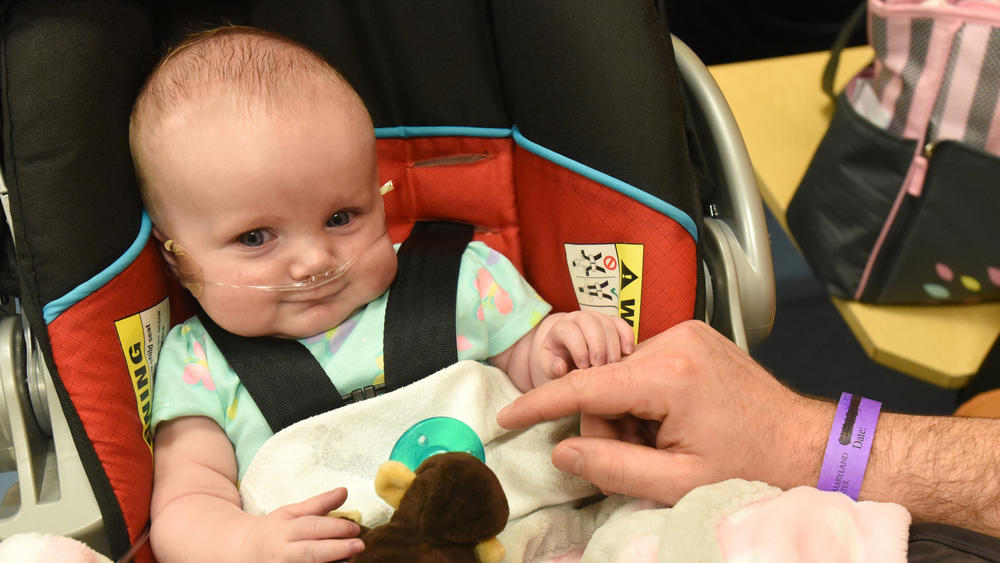News
Stem Cell Treatment for Baby Girl May be Answer to Treating Heart Disease
20/03/2018
Baby Autumn was born with a fatal condition called hypoplastic, also known as left heart syndrome meaning her heart is unable to pump blood around her entire body.
In a normal functioning heart, the right side of the heart has an easier job, of pumping deoxygenated blood from the body to the lungs. The left side is more powerful and pumps the bloody back out around the body. With children who have hypoplastic, the right side has to do twice as much than it should.
In Baltimore, Autumn received a stem cell treatment which meant bone marrow was injected into her heart when she was 4-months old.
She is the fifth child to receive this treatment as part of a national study at the Maryland hospital.
The study was launched after promising results were seen when treating heart attack, strokes and other cardiac problems with stem cells.
Baby Autumn Brown, is one of 10 children to receive stem cells, another 20 children are expected to be given the treatment in Maryland and other paediatric hospitals across the US over following months.
In the US almost 1000 people a year are born with hypoplastic, left heart syndrome and if left untreated it is fatal.
The current treatment for hypoplastic is a three-part surgery, throughout the child’s life.
Even after the surgery, only 60 of the children with the condition celebrate their 5th birthday. But now, with the help of stem cell development, the doctors are injecting stem cells into the working half of the heart during the second surgery.
Sunjay Kaushal, director of paediatric and adult congenital surgery at the University of Maryland and one of the nation’s foremost surgeons for hypoplastic left heart syndrome, said Autumn’s general health beyond the condition and her supportive parents made her a good candidate for the stem cell study.
The surgical team hooked Autumn to machines to help her breath and pump blood around her body, during the procedure. After the heart surgery, the team had to wait to receive stem cells that were being stored by a biotech company.

4 month old baby Autumn Brown [Credit: Baltimore Sun]
The stem cells injected boosted the strength and longevity of Autumn’s weaker side of her heart.
The first four children who took part in the stem cell treatment, are doing well according to the lead researchers.
“I think this is game-changing for these kids,” Kaushal said. “I believe these young hearts are going to be the most responsive.”
The three surgeries change how blood flows so deoxygenated blood goes right to the lungs and refreshed blood is pumped around the body by the right side of the heart.
Joshua Hare the former Johns Hopkins researcher who became the founding director of the Interdisciplinary Stem Cell Institute at the University of Miami Miller School of Medicine, worked with Kaushal on the stem cell therapy study and translated the research into medical use.
The mesenchymal stem cells were taken from a young adult donor and weren’t Autumn’s own, but these stem cells can multiply in a culture to produce enough for use in every baby in the trial, MSC cells can transform into a range of different human cells.
Once in a baby’s heart, Hare said, they can reduce scar tissue, reduce inflammation, promote new small vessels and — perhaps most important — stimulate the heart to grow.
“In my experience, it’s a highly promising therapy and people do well, and we just need more data to prove it,” Hare said.
“My ultimate hope is we can show we can reduce the need for transplants and kids do better, not just by increasing the functioning of their hearts but make them feel better and live longer,” he said. “The goal is really to make kids better.”
LeeAnn Janes, Autumn’s mother, hopes nothing but the best for her child and says she is improving and should be heading home soon to relatives with her parents and other family.
We believe the best stem cells to use in emerging treatments will be the patient’s own stem cells as this doesn’t require a search for a suitable donor and in turn, eliminates chances of the transplanted cells being rejected.
If you want more information on how you can protect your child’s future health by banking their cells, get in touch with our friendly team today or order your free information pack.
